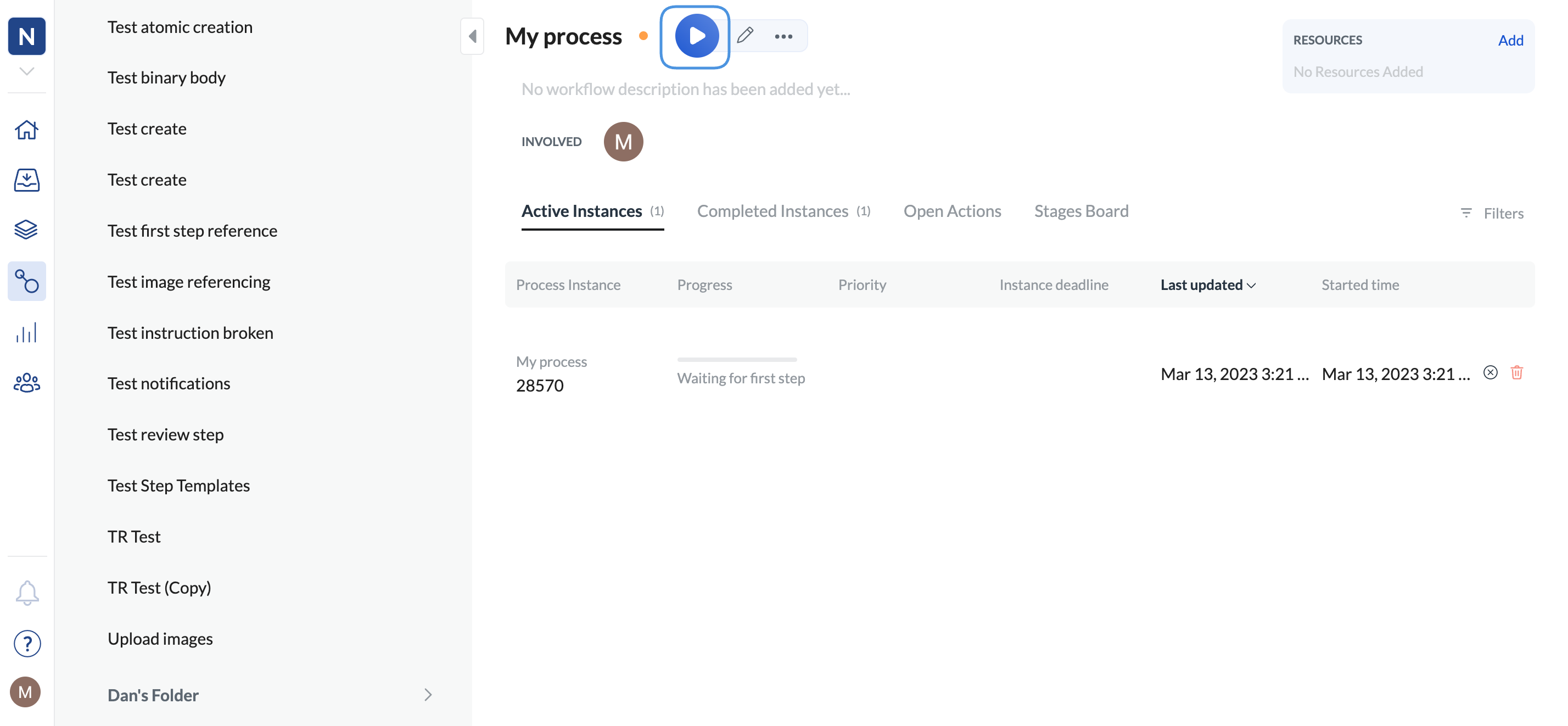Before you begin
- Create the first and the follow-up workflow. The first workflow will trigger the next workflow.
- Have your API key at hand. If you don’t have it, contact your organization admin, or, if you’re an admin, generate the key in Next Matter by going to Company > Next Matter API keys.
- Note down the ID of the workflow that will be triggered with the first workflow. You can get the ID by clicking the follow-up workflow and copying the number from the URL in your browser.

Workflow overview
- Add a template to your first workflow.
- Edit the template settings for the trigger to work.
- Start the workflow instance.
1. Add a template to your first workflow
- In your left-hand navigation, click the Workflow icon.
- Hover over the first workflow and click on the menu icon.
- Click Edit workflow.

- Hover over the last step in your first workflow and click the plus icon.
- Click Templates > Next Matter templates > Launch workflow automatically. This template will add extra steps to your workflow.
- Click the Launch step.
- Click the Settings cog icon. Now, edit the template settings to automatically trigger the follow-up step.
2. Edit the template settings for the trigger to work
-
In the Headers section of Settings, enter your Api-Key. Note that you need the phrase Api-Key to go before the code in the field.

- Select Raw as Body type.
-
In the Body section, enter the workflow number.
To do that, delete
WORKFLOW_IDand replace it with the real ID of the follow-up workflow that you have copied from the URL in your browser. This is an example of what your Body might look like: - Decide what should happen if the step fails (On Failure).
- Save your changes.
Remember to delete the step with instructions that’s added to the template. If you don’t want to send data from the first to the follow-up instance, delete the Send data step as well. If you need to send data, see Send data to another workflow.
3. Start the workflow instance
- In the left-hand navigation, click Workflows.
- Click the first workflow.
-
Click the play icon.

- Give the workflow instance a meaningful name.
- Click Start instance.

